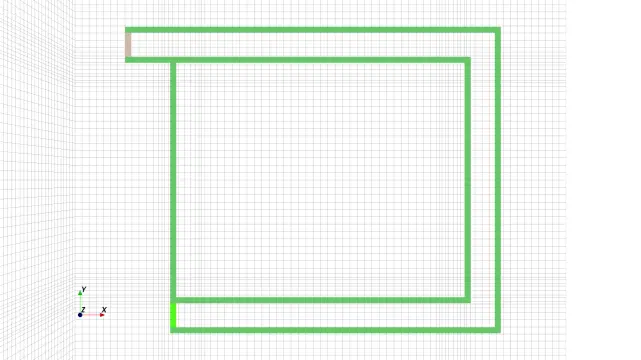Simulating SMA connectors... #electronics #openEMS
#openEMS
Simulating a coax cable in cylindrical coordinates has a funny problem. The mesh cell becomes progressively smaller in area or volume at you move closer to the singular origin, which is the region where the center conductor is located. So you spend an absolutely ridiculous amount of CPU cycles to calculate nothingness - there's no electric field inside a conductor :blobcatfacepalm: openEMS has a special "multigrid" mode to solve this problem. When it's enabled, it skips every other radial mesh line within the specified radius, and can be applied recursively too. #electronics #openEMS
Finally got my new #openEMS simulation running after debugging it for days. #electronics
/me Trying to understand how to run #openEMS full-wave simulations in cylindrical coordinates instead. #electronics
@crazy2bike
Hi, ist Goodwe nur der WR, und was sitzt denn da noch für ein Management System drauf für den Speicher? Oder macht der das mit?
Ich bastel nämlich grad an ähnlichen Themen mit #fenecon / #openems was die Datenpunkte angeht.
Doku ist eher überschaubar 😳
Do you understand how #RF and #magnetics work? Any time I check out Sam Aldhaher's visualizations, I do just a bit better. We spoke on The Amp Hour this week about how to get started in #blender and build out visualizations using tools like #openems and #elmer_fem.
https://theamphour.com/695-making-the-invisible-visible-with-sam-aldahar/
This episode was similar to the one I recorded with Katerina Galitskaya last year, who also does amazing visualizations. It's just SO useful to have people explaining RF with math and 3D models!
#openEMS simulation of 0402 AC-coupling capacitor parasitics. On a 4-layer board, with 0.2 mm from signal layer to plane. Interestingly, the parasitic capacitance of the mounting pads and the parasitic inductance of the capacitor forms an accidental matching network and compensated each other in this stackup, making it usable even at 20 GHz! You can see similar results without a full-wave solver in lumped circuit simulators, by modeling the mounting pads as two short microstrips, and inserting an 0.1 - 0.2 nH ESL in series. But I won't trust this result unless I can borrow a 20 GHz VNA somewhere, since it's extremely sensitive to parasitic modeling. Also, the magical effect disappears for a better 0.1 mm dielectric, often preferred for lower loop area and lower crosstalks. #electronics
Should you remove ground planes below SMD mounting pads to compensate for parasitics? Quick answer: on 4-layer boards (0.1 mm to plane), just use 0402 parts for sensitive signals. Even if you do nothing, my #openEMS simulation found the performance is great up to ~2 GHz (20 dB RL) and usable to ~8 GHz (10 dB RL). I'm going to improve the simulation and publish all details as a tutorial. #electronics
I'm doing full-wave simulation of circuit parasitics around a 100 nF surface-mount AC coupling capacitor in #openEMS. The lumped capacitance itself is modeled as a 2D plane, so its parasitic inductance is obviously almost solely controlled by its mounting height - which I had trouble determining. I had to make an educated guess that a small 100 nF capacitor requires only a few layers, so its capacitance is concentrated at the center of the Z plane. It seemed to work, but I still wanted confirmations. I remembered @tubetime@mastodon.social's book Open Circuits, and I found exactly what I needed. #electronics
Wrote more #openEMS documentation, now playing the role of the project historian. The little-known history on the endless attempts to make simulation easier, each time with the creation, abandoning, and recreation of third-party tools. #electronics
Wrote more documentation for #openEMS. Lumped elements pitfalls. #electronics
Still tweaking the #openEMS documentation. Physicists and engineers run out of variables be like... #electronics
More #openEMS documentation. Spent two days trying to figure out why these formulas don't match textbooks, so you don't have to. :cirno_hi: #electronics
More #openEMS documentation work: I was trying to derive the equation in the project wiki using the source code, but the SageMath output doesn't make any sense... The units in the original wiki page were completely mixed up. :blobcatfacepalm: Some f in the equations are ordinary frequencies, some are angular frequencies... :woozy_baa:
Wrote more #openEMS documentation. The math notes on the old project wiki need cleanup. The equations were written in absolute permittivity and angular frequency, while the software expects you to enter a relative permittivity and ordinary frequency, making it a cross-reference headache. :woozy_baa: I'm pretty sure the Debye formula is now correct, but I still need to check the Lorentz model. #electronics
Wrote more #openEMS documentation, answering questions like: Why does Plasma Frequency have anything to do with simulating a circuit board? #electronics
More #openEMS development: All Matlab/Octave functions now have HTML (Sphinx) documentation now. :patchyhyperrun_rev: #electronics
Yeah, everyone knows what a Dirac impulse is, but the devil is in the details, making documentation availability a critical problem... #openEMS #electronics
More #openEMS documentation. I don't think anyone else has ever reviewed such implementation details. #electronics
3D full-wave #openEMS simulation of the classic experiment in high-speed electronics: where does the return current go? A voltage is suddenly connected (Heaviside step) to a resistor via some wires. An incoming wire and two return wires are connected in parallel. One return path is longer, but runs with the incoming wire side by side, the other wire returns to the source via a straight path. By common sense, radio signals follow the path of least impedance, not resistance, obviously the initial rising edge mostly follows the longer path (until the currents redistribute themselves later reflections occur). #electronics
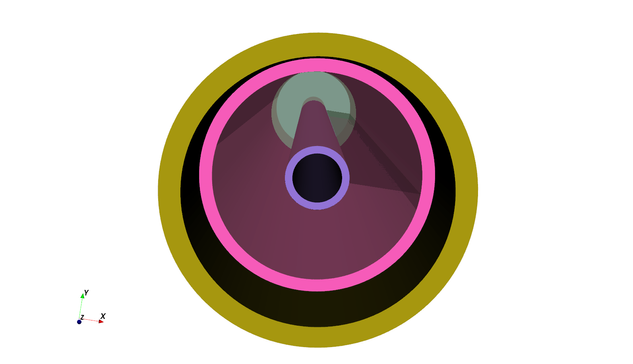
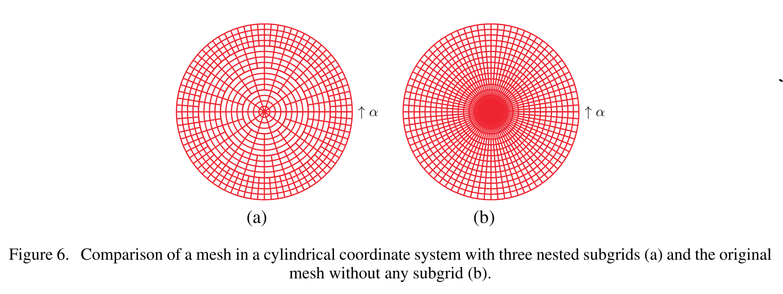
![for task in task_list:
# XXX: openEMS's Python binding contains bugs in the reset logic.
# Thus, each new openEMS instance MUST be associated with a CSX
# instance only ONCE via SetCSX(). Changing CSX via fdtd.SetCSX()
# may cause segmentation faults and hard-to-debug erroneous
# simulation results due to stale state.
newfdtd = openEMS.openEMS()
newcsx = CSXCAD.ContinuousStructure(CoordSystem=1)
newfdtd.SetCSX(newcsx)
task["csx"] = newcsx
task["fdtd"] = newfdtd](https://files.mastodon.social/cache/media_attachments/files/114/727/849/903/325/750/small/bcf40a31aca41543.png)
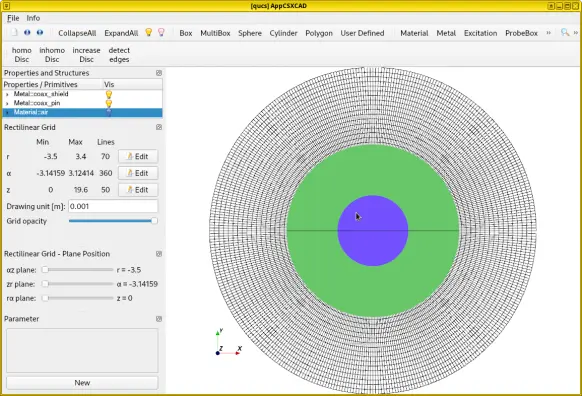
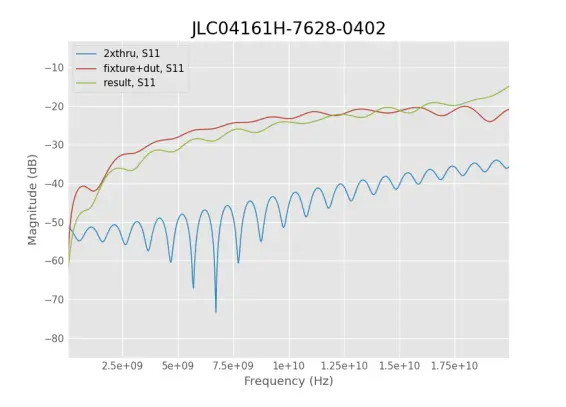
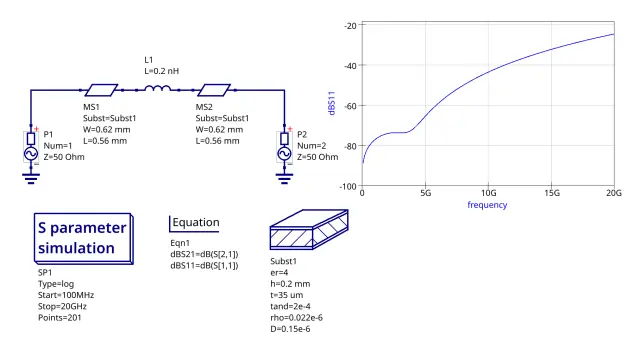

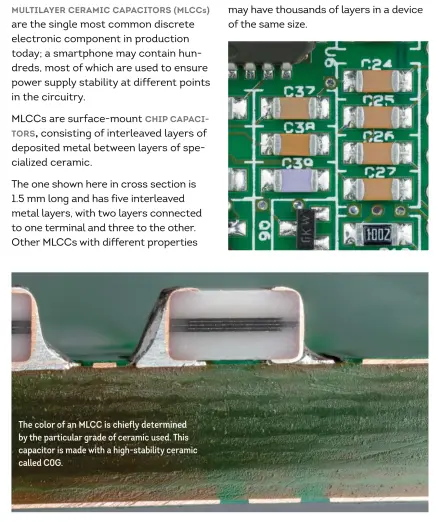
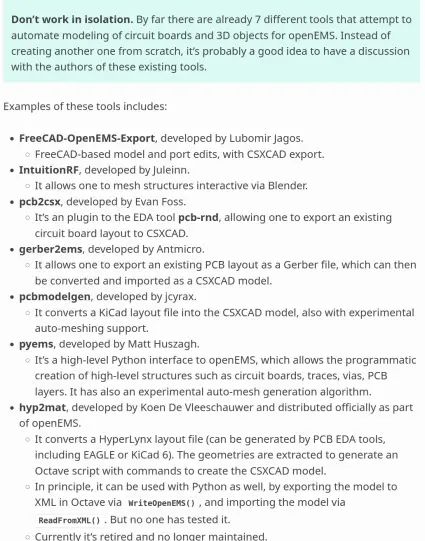
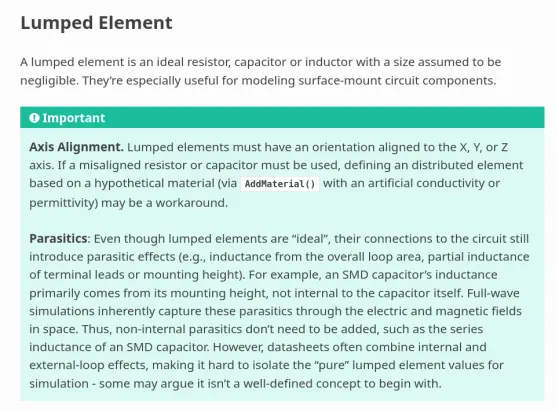
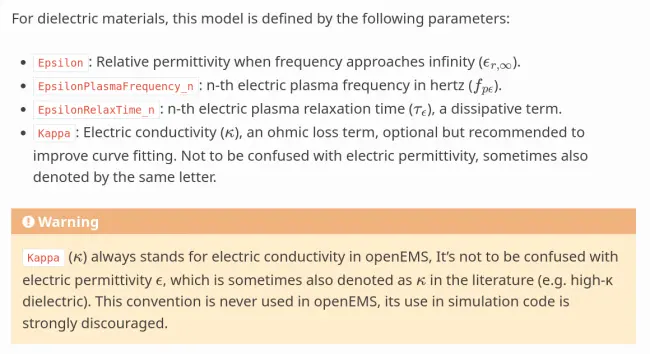
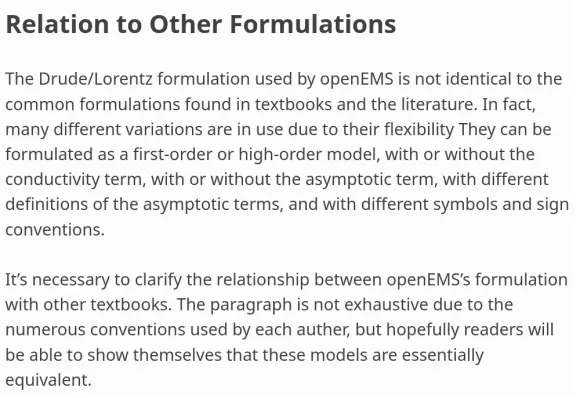
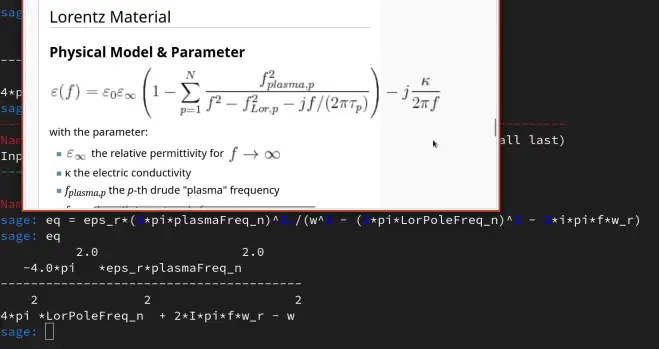
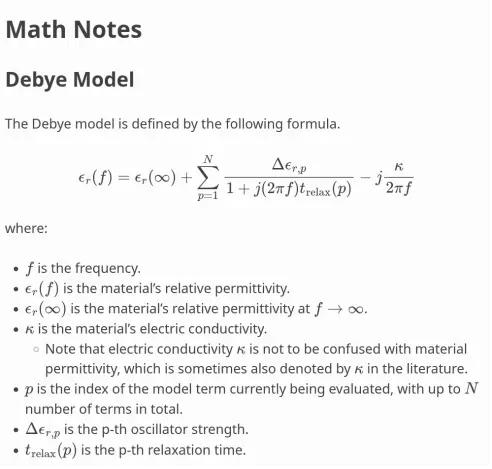
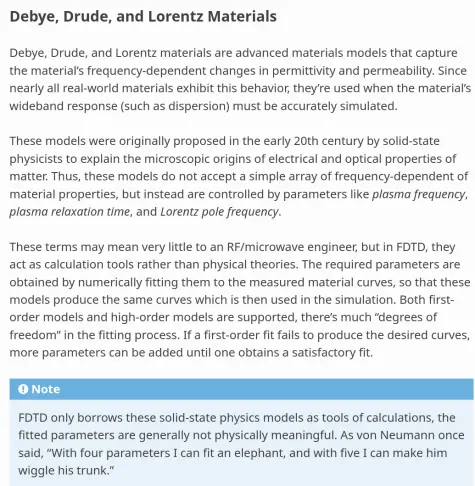


![Excitations
=============
An excitation port requires an associated signal waveform, openEMS
provides Dirac impulse, Heaviside step, Gaussian pulse, and custom
excitation signals.
Dirac Impulse Signal
----------------------
It’s defined by the following expression:
.. math::
e(t) =
\begin{cases}
0, & t < 0 \\
1, & t = 0 \\
0 & t > 0
\end{cases}
Heaviside Step Signal
-----------------------
It’s defined by the following expression:
.. math::
e(t) =
\begin{cases}
0, & t \lt 0 \\
1 & t \ge 0 \\
\end{cases}
Gaussian Pulse Signal
-----------------------
It's defined by the following expression:
.. math::
e(t) = \cos{\left[2\pi f_0 \left(t-\frac{9}{2\pi f_c}\right)\right]} \cdot
\exp{\left[-\left(\frac{2\pi f_c t}{3}-3\right)^2\right]}
where :math:`f_0` in the carrier's central frequency, :math:`f_c` is its
20 dB cutoff frequency.](https://files.mastodon.social/cache/media_attachments/files/114/314/028/019/538/758/small/6688bae1f77afca3.webp)
